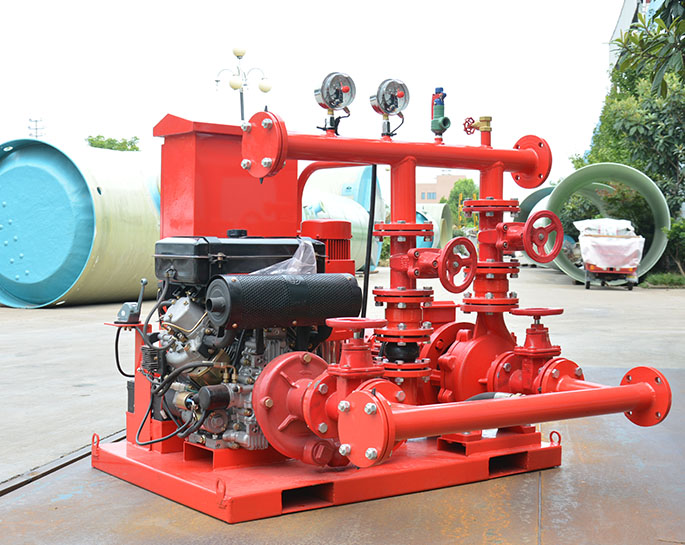Diagnosis of Fire Pump Faults
Diagnosing faults in fire pumps is crucial to maintain the reliability and effectiveness of fire protection systems. Here are steps you can take to diagnose fire pump faults:
-
Visual Inspection: Start with a visual inspection of the fire pump system and its components. Look for any obvious signs of damage, leaks, loose connections, or corrosion.
-
Review Alarm and Event Logs: Fire pump control panels often have logs that record alarms and events. Review these logs to identify any recent issues or patterns of malfunctions.
-
Check Power Supply: Ensure that the fire pump is receiving the correct power supply. Voltage fluctuations or electrical issues can affect the pump's performance.
-
Flow and Pressure Testing: Conduct flow and pressure tests to verify that the pump is generating the required flow and pressure according to design specifications. Compare the test results with the original pump curves.
-
Suction and Discharge Pressures: Monitor suction and discharge pressures during operation. Abnormal pressure readings could indicate issues with cavitation, blockages, or valve problems.
-
Cavitation Check: Cavitation can damage pump components. Check for signs of cavitation, such as pitting or erosion on impeller blades, by inspecting the pump's interior.
-
Net Positive Suction Head (NPSH): Evaluate the NPSH available (NPSHa) versus the NPSH required (NPSHr) by the pump. Inadequate NPSH can lead to cavitation.
-
Seal and Bearing Inspection: Inspect the pump's seals and bearings for wear, leaks, or signs of damage. Damaged seals can cause leaks, while worn bearings can affect pump alignment and performance.
-
Vibration Analysis: Excessive vibration can indicate misalignment, imbalance, or worn components. Use vibration analysis tools to assess the pump's condition.
-
Motor Inspection: If the pump is motor-driven, check the motor for overheating, abnormal noise, and signs of wear. Ensure that the motor is running within its design specifications.
-
Check Valves and Strainers: Inspect and clean suction and discharge check valves and strainers. Blockages can restrict flow and affect pump performance.
-
Oil and Lubrication: If the pump has lubricated parts, check oil levels and the condition of the lubricant. Inadequate lubrication can lead to component wear.
-
Pump Priming: Ensure that the pump is properly primed with water before operation. Insufficient priming can lead to cavitation and reduced performance.
-
System Changes: If there have been changes to the building layout, occupancy, or fire protection requirements, assess whether the pump is still sized appropriately for the new demands.
-
Expert Consultation: If you're unable to identify the issue or if the fault is complex, consider consulting with experts in fire protection systems or pump maintenance.
-
Maintenance Records: Review the maintenance records of the pump to see if regular maintenance tasks have been performed according to schedule.
-
Emergency Start Testing: If permissible, perform an emergency start test to ensure that the pump activates and performs as expected when the fire protection system is activated.
It's important to remember that fire pumps are critical components of life safety systems, and any faults should be addressed promptly to ensure that the system functions as intended during emergencies. Regular maintenance, testing, and monitoring are essential to prevent faults and ensure the reliability of fire pump systems.







